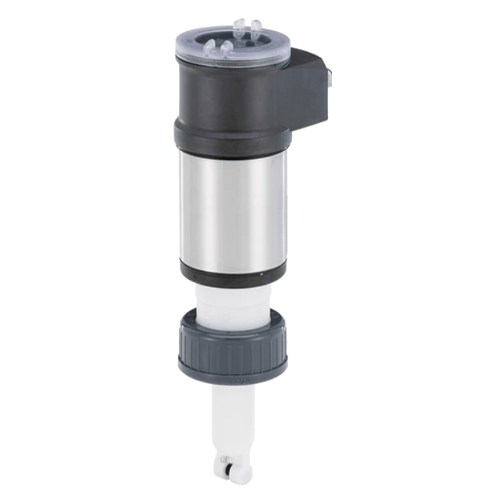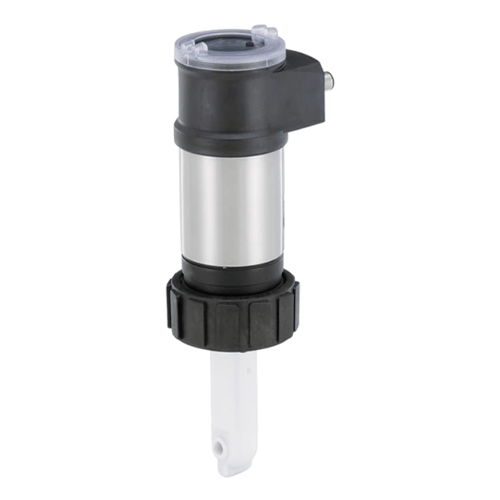8222 Conductivity Meter
The Bürkert conductivity meter Type 8222 is designed for measuring the conductivity of fluids. The sensor element comprises a two-electrode cell and a Pt1000 temperature probe. The sensor itself is available with three different cell constants C. These with C= 0.01 or 0.1 cm- 1 are fitted with stainless steel electrodes and those with C= 1.0 cm- 1 are fitted with graphite electrodes. Thus, due to the measurement device’s design, Bürkert has simplified installation and maintenance work. The device Type 8222 is available in two variants.
The first one, the so-called ELEMENT standard is proposed either with three adjustable outputs (two digital outputs and one analogue output) or with four adjustable outputs (two digital and two analogue) and can be equipped with a display. The display is only necessary for start-up, configuration (e.g. measuring range, units, calibration, thresholds) or as a display of process values.
The second variant, the so-called ELEMENT neutrino is a 2-wire device, without display, with a 4…20 mA current output or with a digital communication mode that can communicate either in IO-Link or in büS (Bürkert system bus based on CANopen).
Both variants are available with a G 1½” union nut for installation in an adaptor with a G 1½” external thread sensor connection. The adaptor is mounted into the process. The ELEMENT neutrino variant is also proposed with a G ¾” external thread for screwing into an adaptor with a G ¾” internal thread sensor connection. The device Type 8222 converts the measuring signal and computes the output signals, which are provided via one or two M12 plug connections for the ELEMENT standard variant as well as via one M12 plug connection or on a terminal strip via a cable gland for the ELEMENT neutrino variant. The device in the ELEMENT standard variant shows several values in different measuring units (if display is mounted).





